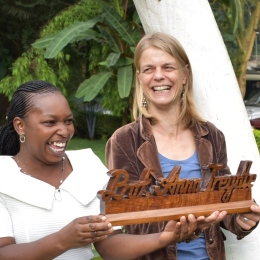Research project NG| Identifying geospatial and temporal patterns in human-wolf interactions
This doctoral research project focusses on human-wolf interactions from a geographical perspective and aims to identify geospatial and temporal patterns in interactions between livestock farmers and wolves in Italy and Sweden.

Background
Due to developments in society and European legislations (Habitats Directive), wolves (Canis lupus, Figure 1) have extended their territories and population sizes have increased since the 1960s. After decades of extinction in many European countries, wolves have now spread to areas where they encounter a society that is no longer used to sharing the landscape with large carnivores. Hence, even though considered a huge success from the conservation perspective, wolves now pose a challenge to different land users. One stakeholder group affected by the presence of wolves are livestock farmers, who have to engage in efforts to protect their livestock. With this project, we aim to (i) understand socio-economic and environmental drivers that impact human-wolf interactions, (ii) identify geospatial and temporal patterns and (iii) examine the success of mitigation measures against possible livestock predation by wolves. With this interdisciplinary approach, we will create a comprehensive understanding that supports the conservation of wolves and promotes a sustainable livelihood of livestock husbandry.
Awarded grants in support of this research project
C.F. Liljevalch J:ors resestipendier 2025
Lillemor och Hans W: son Ahlmanns fond för geografisk forskning 2024
Elisabeth och Herman Rhodins minne 2023
Albert and Maria Bergström's foundation 2023
Carl Mannerfelt Fond 2022
Project description
In the first part of the project, we conducted participatory mapping and a semi-structured survey with 70 livestock farmers in the Italian Alps with the support of Stelvio National Park, Italy. Our interests lie particularly in the two regions: Trento, where people have experienced large carnivore presence due to the reintroduction of Brown bears (Ursus arctos), and Lombardy, where currently significantly fewer confirmed wolf individuals are roaming than in Trento. With the survey, we sought to gain knowledge about the attitudes of farmers – a stakeholder group whose daily activities are influenced by the presence of wolves – towards these large carnivores, the current management of wolves in these regions and protection measures, as well as the underlying drivers. We address the following questions: How effective and feasible do farmers consider fences, the use of guard dogs and shepherds? Why have so many farmers not yet implemented any measures?
In the second part of the project, we are going to extent our geographical focus to a country with very different circumstances: Sweden. Albeit the same European regulations are in place, the Scandinavian wolf population (shared with Norway) is being managed by a yearly license hunt. The population size of wolves is significantly smaller than in Italy, and concerns have been raised about the long-term viability of the population due to their low genetic diversity and little influx from other populations. In our research, we intend to focus on the awareness and willingness of livestock farmers to adopt livestock protection measures and reduce depredation risk.
As future steps we seek to investigate spatial interrelations between livestock herds, protection measures and wolves by considering landscape characteristics such as vegetation cover, land use, topography and human-made infrastructures. In addition to scientific publications, we will also carry out a knowledge transfer through informational events and written materials to the local communities and policy actors. This will ensure that key findings are effectively shared with practitioners.
Project members
Project managers
Anna Treydte
Associate professor, Docent

Members
Ronja Alexandra Kraus
PhD Student

Anna Treydte
Associate professor, Docent


